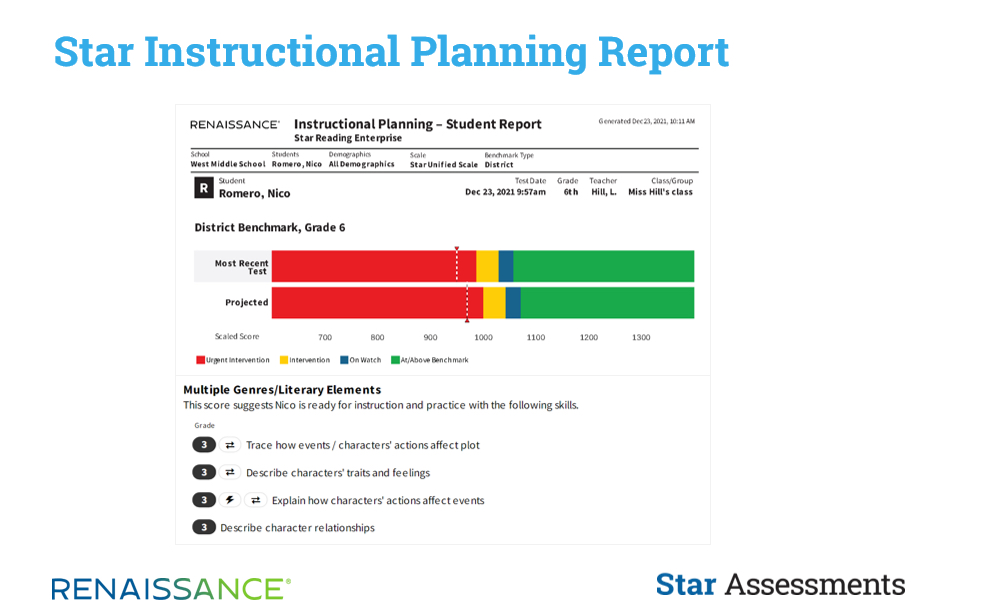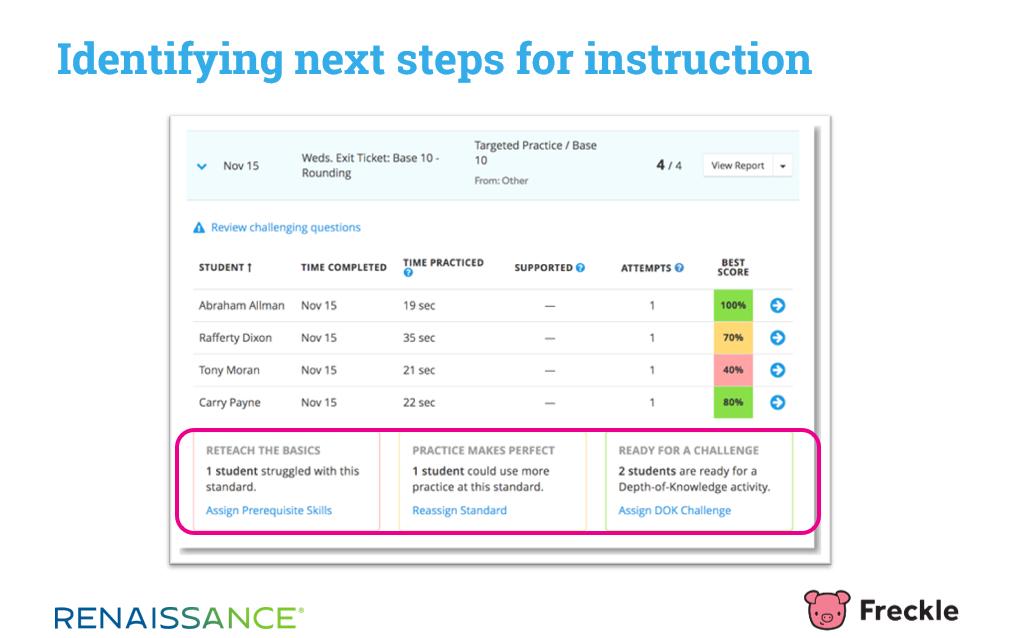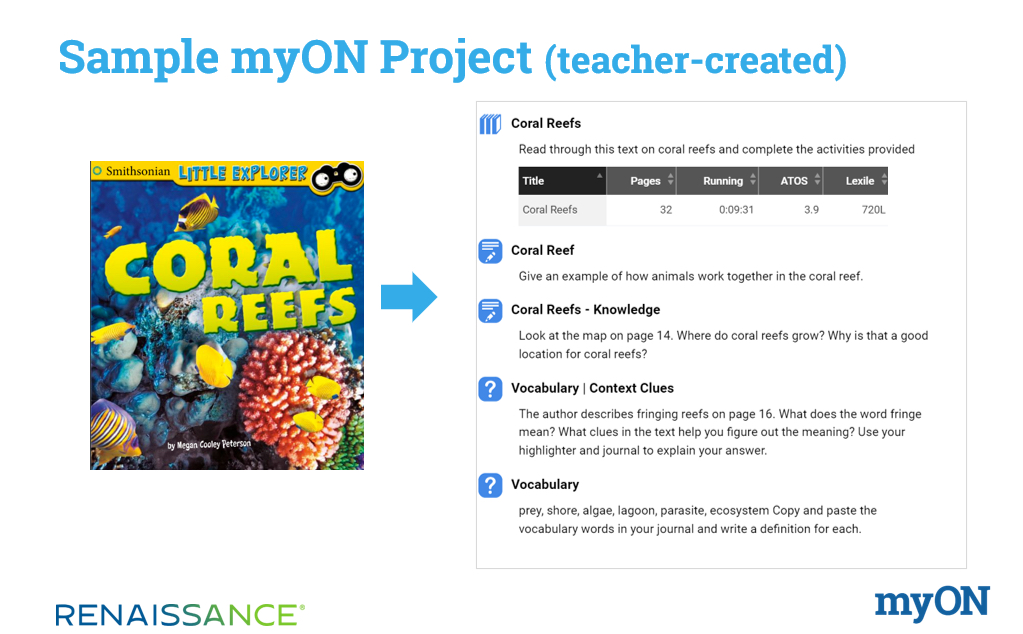February 25, 2022
This summer will be different than most—not only because of the ongoing disruptions to learning but because districts have plentiful funding to support their summer programs. Summer learning experiences are encompassed in ESSER funding uses. Administrators are not accustomed to easily saying, “We’ve got money for that,” but ESSER funding is around well into 2024. When it comes to summer learning this year and for the next two years, ESSER funds are available.
As districts consider how to best use this funding, they may find opportunities to adopt resources that not only support learning this summer, but also during summers well into the future. Before we explore this point and how Renaissance can help, let’s consider what we really know about summer learning—and, more specifically, about summer learning loss.
The research on summer learning
Time away from school during the summer definitively impacts student performance, particularly for those who are otherwise disadvantaged. Right? Many of us have heard that it’s summer, not the regular school year, that contributes the most to gaps in performance.
Many of our beliefs about the “summer slide” are based on the findings of the Beginning School Study, which began in the fall of 1982 and tracked 838 first graders in Baltimore City Public Schools for the next 20 years. The results, published in 2003, are the basis of many strongly held beliefs about summer learning loss. The data have been discussed in Time magazine and The Economist, and featured in well-known books like Malcolm Gladwell’s Outliers.
That study, however, is now nearly 20 years old, involved a relatively small sample size, and measured students’ progress using assessment tools that are outdated by today’s standards. So, are the results truly valid?
Recently, Paul von Hippel of the University of Texas, as well as researchers at the Early Childhood Longitudinal Studies (ECLS) Program, independently tried to replicate the Beginning School Study’s results, and their collective findings do not agree. In fact, the three analyses show very different levels of impact. The Beginning School Study found that summer learning loss had major impacts on students, while von Hippel found that students experienced two to three months of “slide” and the ECLS researchers found only minimal impact.
Von Hippel’s summary of the conflicting results is clarifying. “So, what do we know about summer learning loss?,” he asks. “Less than we think.” Despite the variance as to the scale of the impact, however, some findings are consistent across the three analyses. Most notably that, as von Hippel states, “Nearly all children, no matter how advantaged, learn much more slowly during summer vacations than they do during the school year.” This finding allows us to see the summer as a unique opportunity.
How so? If all students are either learning more slowly or regressing when they are away from school, then summer is an occasion to offer programs and support for students who are on the lower ends of performance and help them to catch up. If educators can help them grow faster while other students are slowing down, achievement gaps can be lessened.
While we’re just past the mid-point of the academic year, it’s not too early to begin to plan for students’ summer 2022 learning experiences by thinking about initiatives ranging from required and highly structured to optional and less structured. While some programs may take the form of mandatory summer school, all of these reflect important forms of learning during the summer months.
Let’s explore three options.
1. Formal summer school (including High-Dosage Tutoring and Acceleration Academies)
At this most intense level of summer programming, participation may be highly encouraged or even required, because the students served are typically performing significantly off grade-level expectations. There’s been a recent and important shift in the thinking about how to best address the instructional needs of such students. This is captured in the mantra, “Accelerate, don’t remediate,” and is based on instructional approaches gathered under the umbrella term Accelerated Learning. This approach features prominently in recent guidance from the US Department of Education and appears in many states’ COVID-19 recovery plans as well.
As I noted in an earlier blog, the primary emphasis of accelerated learning is maximizing the time students spend with grade-level content. This is achieved through a purposeful consideration of essential grade-level skills and targeted, “just-in-time” instruction and support for any necessary prerequisites, rather than more indiscriminate “just-in-case” review or remediation.
The challenge is that this approach requires detailed knowledge of both essential grade-level skills and necessary prerequisites. Renaissance’s free Focus Skills Resource Center provides detailed information on both fronts, and these resources have recently been expanded to include Focus Skills for Spanish reading as well.
Implementing accelerated learning also requires up-to-date student assessment data. An understanding of where students are academically and how they’re progressing is critical. Users of Renaissance Star Assessments who close out the core academic year with spring screening will begin summer school with data on student performance—as well as up-to-date instructional planning information—already available. Time is of the essence with summer learning, and new Star users trying out the assessment for the first time will find it to be not only highly reliable and valid, but also capable of providing information in the shortest amount of time of any leading interim assessment.

Also, unlike some assessments, Star provides answers to the critical “what’s next?” question with essential Focus Skills highlighted on all reports and dashboards, along with immediate access to thousands of aligned educational resources. Administering Star at the end of a summer program is also advisable. This allows educators to gauge student growth over the summer months and offers a “fresh crop” of placement information for back-to-school.
Of course, it’s also critical to provide the right instruction and practice to help students meet grade-level expectations. The following Renaissance practice products can be a valuable addition to summer school programs:
- The myON digital reading platform, which provides both online and offline access to thousands of enhanced digital books and news articles.
- Lalilo, which helps K–2 students to develop foundational literacy skills in phonics, word recognition, vocabulary, comprehension, and more.
- Freckle for math and ELA, which supports both teacher-assigned practice and differentiated, adaptive practice in and out of the classroom.
Freckle is particularly well suited to an accelerated learning approach, as shown in the screenshot below. Here, the teacher sees student performance on an “exit ticket” for Base 10—Rounding. At a glance, she can identify who needs re-teaching of prerequisite skills (in this case, Tony), who needs a bit more practice with the current skills (Rafferty), and who’s ready for a deeper challenge that probes their Depth of Knowledge (Abraham and Carry). She can even assign appropriate practice activities to each student by clicking the links at the bottom of the screen.

2. Summer enrichment programs
For many students, summer learning doesn’t mean a required “summer school” experience. Their needs may not be as great, and it’s possible that your capacity to accommodate learners in summer school is limited.
Less intense but still very meaningful programs can take a variety of forms and can even be provided by community partners. For example, daily attendance at a Boys and Girls Club or similar programming is a reality for some students. When informed and supported, community partners can provide and facilitate dedicated daily time for reading and/or math practice using Renaissance products like myON, Freckle, Lalilo, and Accelerated Reader.
Other students might not attend school-based or community partner programming daily, but even weekly check-ins with teachers or others can be of tremendous help in sustaining motivation and providing feedback. For example, a district might offer “Math Mornings” once per week where students could come in to school buildings to review their independent practice in Freckle and participate in power lessons and math games focused on essential skills—the Focus Skills I mentioned earlier.
Similarly, the public library might facilitate a reading club each Monday and Friday where students can take Accelerated Reader quizzes and experience read-alouds. Many districts build myON Projects—a collection of digital texts on a common topic or theme, with embedded reading and writing activities—which could be the focus of group discussions and activities when students meet with others

From math camps and reading clubs to summer initiatives organized in partnership with community organizations, the goal of enrichment programs is to keep students engaged in learning, ensuring that summer is a season of continued growth, rather than one of any possible “slide.”
3. Independent summer learning
Schedules, priorities, or even geography might prevent some students from participating in more formal programs, but with a few supports, an independent summer learning experience can be an useful option as well.
From at-home reading and math activities to DIY challenges, independent learning—which includes targeted reading and math practice—can help maintain and even grow students’ skills over the summer months, particularly essential Focus Skills. Using technology to support this learning offers several key benefits. For example, many digital products like Freckle are adaptive, meaning that they respond and adjust to students’ needs in real time, a capability well beyond static, paper-based activities. These programs’ interactive and visual nature is also more engaging than paper and pencil. Finally, digital resources typically provide teachers, families, and even students with ongoing feedback about how much students are engaging and how well they are performing when they do.
Although I’m calling this category “independent” learning, it’s ideal if some form of adult monitoring and feedback can be incorporated. For example, you might use family letters to help parents and guardians understand how to access information on their child’s summer engagement. Perhaps with ESSER funding, some teachers might be willing to work a set number of hours per week over the summer, so they can review student activity online and remotely “check in” with students to offer feedback, support, and encouragement.
Making the most of your ESSER funding
While we face many challenges from the COVID-related disruptions, there is also unprecedented federal funding that we can tap. This means that we have more money than usual for summer initiatives, and this money can also support advanced and deeper summer planning. Consider lightening the time commitment on teachers who might be willing to assist with summer school or math and reading camps by beginning to plan now—and take full advantage of your available technology.
For example, myON Projects are ideal for summer learning. If teacher teams begin developing even a handful of projects each month between now and the end of the school year, they will be well positioned for summer. These projects can even live on into future years, providing consistency in summer learning and minimizing your planning tasks for future summers.
As I stated earlier, summer learning reflects a unique opportunity to close achievement gaps. Such gaps existed prior to the pandemic, but the disruptions have clearly exacerbated them. While we cannot change these realities, we can change how we respond to them. In an era when so many things are out of educators’ control, a well-planned and thoughtful summer learning program is something we can build to help get students back on track.
Paul von Hippel notes that “every summer offers children who are behind a chance to catch up.” He adds that even if the scale of the summer slide is smaller than we think, and if “gaps don’t grow much during summer vacations, summer vacations still offer a chance to shrink them.” This summer, let’s make the most of the opportunity before us.
Visit our summer learning page for free resources to support your summer initiatives. For more information about using ESSER and other funding for summer learning, click the button below.


